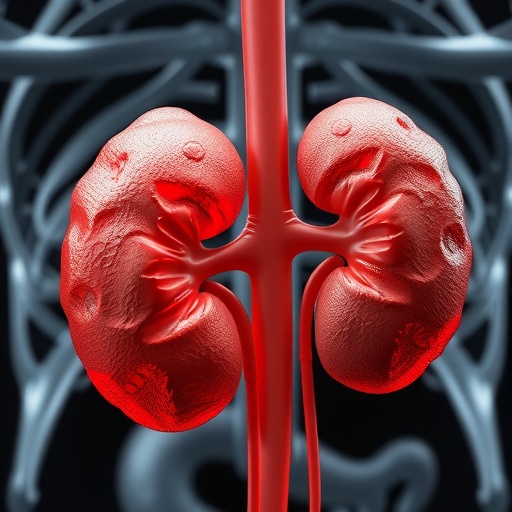Hypertension, often labeled the silent killer, stands at the forefront of modifiable risk factors contributing significantly to cardiovascular diseases worldwide. As a leading cause of morbidity and mortality, uncontrolled high blood pressure has far-reaching implications not only on individual health but also on healthcare systems globally. Despite advancements in understanding and managing this condition, the prevalence of uncontrolled hypertension presents an ongoing challenge in health management.
From the years 2003 to 2018, the European Society of Hypertension and the European Society of Cardiology provided unified guidance on the management and treatment of hypertension through four comprehensive sets of guidelines. These documents were instrumental in shaping clinical practices across Europe, pushing professionals toward a more standardized approach to diagnosing and managing high blood pressure. However, the landscape shifted when these societies independently released their guidelines for hypertension in 2023 and 2024. This marked a significant turning point, as it introduced two distinct approaches to managing and treating hypertension, prompting a broader discussion within the medical community.
Despite the divergence in guidelines, a comprehensive review reveals a remarkable consensus between the two societies regarding key recommendations. This includes standard practices in the diagnosis of hypertension and management strategies that encompass lifestyle modifications and pharmacologic therapies. However, notable differences do exist when it comes to the definition and classification criteria for hypertension as well as specific treatment approaches. These variances underline the complexity of hypertension management and the importance of revisiting established practices in light of emerging evidence.
The ramifications of suboptimal blood pressure control are profound. Globally, the burden of hypertension-associated complications can result in increased healthcare costs, loss of productivity, and diminished quality of life. Factors affecting this control can often be classified into two primary domains: patient-related issues and systemic challenges within healthcare delivery. On the patient side, a lack of awareness or understanding of hypertension, combined with poor adherence to prescribed treatments, contributes significantly to inadequate management of the condition. Many individuals remain unaware of their hypertensive status, while those diagnosed often fail to manage their blood pressure effectively.
Additionally, inertia among healthcare professionals compounds the issue of hypertension management. This can manifest as a reluctance to initiate treatment, prescribe appropriate therapy, or adjust medications based on patient needs. The disconnect between clinical guidelines and actual practice signifies a critical gap that must be addressed to enhance patient outcomes. Health professionals often find themselves overwhelmed with the sheer volume of data, guidelines, and best practices available, leading to confusion and inconsistency in hypertension management.
Furthermore, the health systems that manage these patients experience inherent barriers, such as limited access to care and variability in adherence to clinical guidelines. The uptake of evidence-based recommendations is often inconsistent, with some practitioners relying on outdated practices that may not align with current evidence. These systemic issues underscore the need for continual education among healthcare providers about the latest guidelines and a re-evaluation of existing hypertension management protocols.
The 2023 and 2024 guidelines emerged as a response to these challenges, bringing with them fresh perspectives on the diagnosis, management, and monitoring of hypertension. By comparing the key recommendations from both sets of guidelines, healthcare professionals can better navigate the complexities of treatment strategies. Notably, these guidelines emphasize the importance of a tailored approach to hypertension management, recognizing that treatment must often be individualized based on patient characteristics, comorbidities, and patient preferences.
Both guidelines agree on critical lifestyle interventions that can help reduce blood pressure levels, including dietary modifications such as the DASH diet, increased physical activity, and weight loss. These non-pharmacologic approaches form the cornerstone of hypertension management and should be actively promoted at the onset of diagnosis. Yet, the emphasis on lifestyle alone is insufficient; pharmacotherapy is often required to achieve and maintain target blood pressure levels, particularly in moderate to severe cases.
In addressing pharmacologic treatment, significant distinctions arise between the two sets of guidelines. Recommendations regarding first-line agents vary, with some emphasizing the efficacy of newer antihypertensive medications while others stress the importance of traditional therapies. This divergence can affect treatment algorithms and influence clinician choices. Still, both sets of guidelines recognize the necessity of regular monitoring to assess the effectiveness of any prescribed regimen and to make necessary adjustments based on patient response.
As healthcare providers navigate these evolving recommendations, patient engagement remains a critical component. Empowering patients with knowledge and involving them in their treatment plans fosters adherence and can mitigate many of the challenges associated with hypertension management. Open discussions about medication side effects, lifestyle changes, and the importance of routine follow-up appointments can enhance the therapeutic alliance and improve long-term outcomes.
The need for clarity and uniformity in hypertension management is underscored by a growing body of research emphasizing the disparities in hypertension control rates across different populations and settings. While certain demographic groups may experience higher rates of uncontrolled hypertension, ongoing education, and outreach initiatives can help bridge these gaps. Public health campaigns aimed at increasing awareness about hypertension and its consequences can likewise play a pivotal role in improving overall awareness and adherence to treatment.
Moving forward, the synchronization of the myriad recommendations from the 2023 and 2024 guidelines will be crucial for forming a cohesive practice framework. While variations in definitions and treatment protocols may present challenges, they also offer opportunities for innovation and improvement in how hypertension is addressed. The medical community must harness this moment to drive forward strategies that maximize patient care and ultimately work towards reducing the widespread burden of hypertension globally.
Additionally, with ongoing research and technological advancements, future endeavors will likely bring forth more refined treatment paradigms and novel therapeutic agents, thus enhancing the hypertension management landscape. The constant evolution of clinical guidelines coupled with emerging evidence will serve as the cornerstone of effective hypertension management in the years to come.
As we advance toward more comprehensive and effective strategies for hypertension management, collaboration among healthcare professionals, patient advocacy, and continued education will be essential. The ultimate goal remains clear: reducing the burden of hypertension-related morbidity and mortality and promoting a healthier future for individuals at risk.
Subject of Research: Hypertension Management Guidelines Comparison
Article Title: European Guidelines for Hypertension in 2024: A Comparison of Key Recommendations for Clinical Practice
Article References:
Lauder, L., Weber, T., Böhm, M. et al. European guidelines for hypertension in 2024: a comparison of key recommendations for clinical practice.
Nat Rev Cardiol 22, 675–688 (2025). https://doi.org/10.1038/s41569-025-01187-2
Image Credits: AI Generated
DOI: 10.1038/s41569-025-01187-2
Keywords: Hypertension, Blood Pressure, Cardiovascular Health, Clinical Guidelines, Patient Management, Pharmacotherapy, Lifestyle Modifications.
Tags: cardiovascular disease risk factorsclinical practices for hypertensionEuropean Society of Cardiology guidelinesEuropean Society of Hypertension recommendationshypertension management guidelines 2024key recommendations for hypertensionlifestyle modifications for hypertensionmanaging high blood pressure effectivelypharmacologic treatment of hypertensionsilent killer hypertensionstandardized diagnosis of hypertensionuncontrolled high blood pressure challenges





